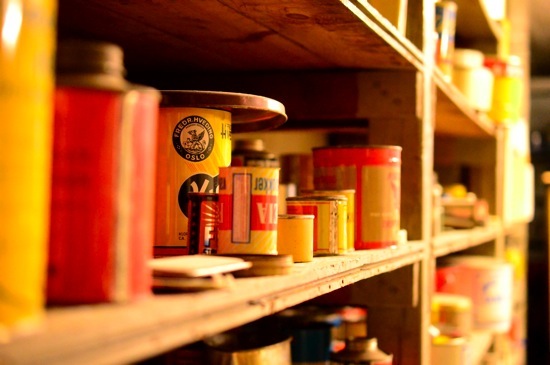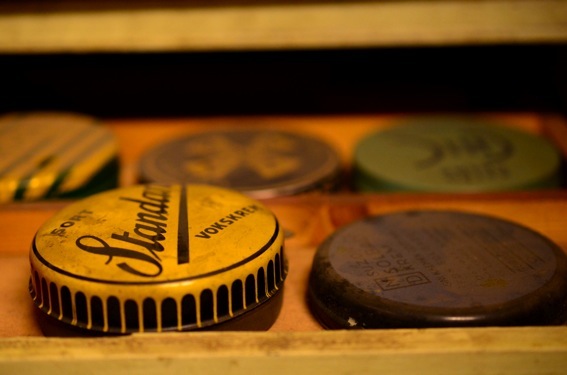Tilstandsrapport 22.03.2014-26.03.2014 initiated by Urban Sjøfront - the edible city

In recent years Anna Roos has developed an interest in reports, statistics, regulations and plans concerning site development, crime fighting, living conditions and city planning. There is something extraordinary with documents like this. You can come across terms like the ideal user, decent people and unwanted elements. The artist asks who is then the non-ideal user, who are the indecent persons and who are the elements that we don't want in our communal public space. Because as it turns out, the unwanted elements referred to, are indeed human beings.
Roos related the project to the history of the old building where it took place. The video shows old cans, earlier produced in the factory. They are stored because they contain history, but as of the moment they are neglected, collecting dust in a basement. However, the artist wanted to pull them back into the public and show them to the visitors. The artist reading a text compliments the visual imagery. This text is a somewhat surreal sampling of words and phrases commonly used in media, in public discussion and in earlier mentioned reports and plans. The surreal cross editing of the text, highlights what is actually said: There are elements, we as a society, don't want in public space.

The artist also came across a collection of old industrial lamps used in the factory. She brought them into the exhibition as found objects, reminiscent of old times, yet presented in an aesthetic rather than functional setting. Torches like the ones often used by security personnel in dark places lit them up. This left the hall quite dark with spots of light distributed evenly around.

From the inside of two of the nearby placed industrial lamps, you could hear whispering.
This translates to something like:
"Lets get everything on the table. Everything on the table has to go. Serve yourself. Help yourself."
The majority of the visitors became uneasy by this invitation. "Was it for real? Could they really take a piece?" Only a handful of visitors did. Most of them left the chocolates untouched. The artist was present in the exhibition at all times. Many visitors asked what to do? But the artist left it up to them to decide.
At the other corner of the exhibition hall was another soundtrack integrated into an industrial lamp. This was the sound of a small child reciting a well-known children's riddle. "Elle, melle..." This riddle is used for instance when playing hide and seek. It is a way to target the one to seek. The Norwegian words in the end goes something like: "...you are left out..."
So in the end, who is left out? Who is the unwanted element?
Video documentation from exhibition:
